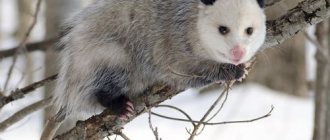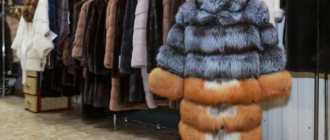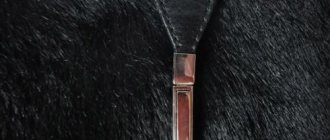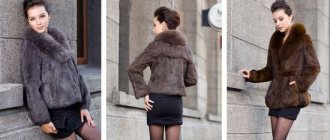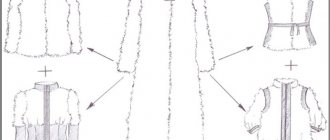- Wild animals
- >>
- Mammals
The snow leopard is an amazing inhabitant of the mountains, a predatory, dexterous, and very graceful animal.
The animal is not called snow for nothing. This is the only representative of the cat family that lives in the mountains, where there is snow all year round. The predator is also called the snow leopard, the lord of the mountains or the snow leopard. In ancient times, due to the similarity of appearance, they were called snow leopards, and were even considered representatives of the same species. However, snow leopards are not related to leopards. They are much stronger and faster, although they are inferior in size. Unfortunately, today this incredibly beautiful predator is on the verge of complete extinction.
Origin of the species and description
Photo: Snow Leopard
Snow leopards are representatives of predatory mammals. They belong to the cat family, separated into the genus and species of snow leopards. The theory of the origin of this amazing and very graceful predator has not yet been formed.
Back at the end of the 16th century, Russian fur traders and artisans heard from Turkic hunters about a mysterious handsome man, whom they called “irbiz”. For the first time, European residents were able to see the strange cat in 1761. Researcher Georges Buffon showed European nobility pictures that depicted a very beautiful wild cat. He supplemented his pictures with information that they are trained and raised to participate in hunting in Persia.
Video: Irbis
Since then, many scientific researchers and zoologists have been interested in this amazing beast. In 1775, the German zoologist-naturalist Johann Schreber wrote an entire scientific work that was devoted to the origin and evolution of animals, as well as a description of their appearance and lifestyle. Subsequently, the Russian scientist Nikolai Przhevalsky also studied the life activity of the snow leopard. A number of scientific, including genetic, examinations were carried out, according to which it was possible to establish that the approximate existence of the feline predator is about one and a half million years.
The first remains of the animal, which by all indications belonged to the snow leopard, were discovered on the western border of Mongolia, in Altai. They are dated to the late Pleistocene period. The next significant find is the remains of an animal in the northern region of Pakistan. Their approximate age is one and a half million years. Initially, snow leopards were classified as panthers. A little later, studies showed that the snow leopard and the panther do not have direct common characteristics.
This representative of the cat family has distinctive features that are not inherent in other representatives of this family. This gives grounds to distinguish them into a separate genus and species. Although today there is no exact information about the origin of the snow leopard genus, scientists are inclined to believe that the snow leopard and the panther did not have common ancestors. The results of genetic testing give reason to believe that they separated into a separate branch a little more than a million years ago.
Appearance and features
Photo: Animal snow leopard
The snow leopard is an animal of incredible beauty and grace. The body length of one adult individual is 1-1.4 meters. The animals have a very long tail, the length of which is equal to the length of the body. Tail length is 0.8-1 meter. The tail plays a very important role. Animals use it to maintain balance in mountainous areas and to warm their front and hind paws in snow and frost. The weight of one adult individual is 30-50 kilograms.
Sexual dimorphism is not expressed, but males are slightly larger than females. Predators have large front paws with round pads measuring 1*1 cm. Long hind feet ensure fast movement among mountain peaks and deft, graceful jumps. The limbs are not very long, but the paws are thick and powerful. The paws have retractable claws. Thanks to this, there are no traces of claws left in the snow where the graceful predator passed.
The feline predator has a round head, but with small, triangular ears. In winter, in thick, long fur, they are practically invisible. Animals have very expressive, round eyes. The snow leopard has long, thin whiskers. Their length reaches just over ten centimeters.
Interesting fact. The snow leopard has very long and thick fur, which keeps it warm in harsh climates. The length of the coat reaches 50-60 centimeters.
The area of the spinal column and the lateral surface of the body are gray, close to white. The abdominal area, inner surface of the limbs and lower abdomen have a lighter tone. The unique color is provided by ring-shaped dark, almost black rings. Inside these rings are smaller rings. The smallest circles are located in the head area. Gradually, from the head, along the neck and body to the tail, the size increases.
The largest rings are located in the neck and limbs. On the area of the back and tail, the rings merge, forming transverse stripes. The tip of the tail is always black. The color of winter fur is smoky gray with an orange tint. This color allows them to remain unnoticed by steep rocks and snowdrifts. By summer, the coat becomes light, almost white.
Original models
The catalog of fur coats in Bars opens with an interesting new product of a natural mink coat, with a sable finish. The product is decorated with a strap with transverse fur inserts. A beautiful medium-length coat with a stand-up collar is ideal for adding the finishing touch to a winter look. A light brown fur coat goes well with trousers, jeans, a skirt and a dress.
For girls who prefer black outerwear, the designers of the Bars factory offer a scanblack mink model. An elegant short fur coat, made of mink, perfectly emphasizes the figure of a fashionista thanks to the leather belt.
Where does the snow leopard live?
Photo: Snow leopard in Russia
Animals live only in mountainous areas. The average altitude of its permanent habitat is 3000 meters above sea level. However, in search of food, they can easily climb to a height twice as high as this figure. In general, the snow leopard's habitat is very diverse. The largest number of animals is concentrated in the countries of Central Asia.
Geographical regions of snow leopard habitat:
- Mongolia;
- Afghanistan;
- Kyrgyzstan;
- Uzbekistan;
- Tajikistan;
- China;
- India;
- Kazakhstan;
- Russia.
In our country, the population of the feline predator is small. They are located mainly in Khakassia, Altai Territory, Tyva, and Krasnoyarsk Territory. The animal lives in mountains such as the Himalayas, Pamirs, Kun-Lun, Sayan Mountains, Hindu Kush, the mountains of Tibet, and many others. Animals also live in protected and protected areas. These include the territory of the Altushinsky and Sayano-Shushensky national parks.
Most often, the predator chooses the territory of steep rock cliffs, deep gorges and bushes as its habitat. Snow leopards prefer regions with low snow cover. In search of food, it can go down to forests, but spends most of its time in mountainous areas. In some regions, snow leopards live at an altitude not exceeding a thousand kilometers above sea level. In regions such as the Turkestan Range, it mainly lives at an altitude of 2.5 thousand meters, and in the Himalayas it climbs to a height of six and a half thousand meters. In winter, they can change their locations depending on the regions where the ungulates live.
The territory of Russia accounts for no more than 2% of the entire habitat of predators. Each adult occupies a special territory, which is prohibited for others.
Snow leopard fur coat: what does it look like and what goes best with it?
If you want to own a completely unique item, of which there are no more than a hundred around the world, and at the same time you don’t mind paying a huge sum, which can exceed the cost of luxury real estate, then turn your attention to snow leopard fur coats.
This representative of felines is listed in the Red Book. At present, there are no more than 6,000 individuals left in the whole world. Therefore, snow leopards are carefully protected from poachers. It is very difficult to purchase such a fur product even for those who may have the necessary amount. They are produced in single pieces by famous fashion houses and, as a rule, this is done by special order. Old snow leopard skins are often used for tailoring, from which more fashionable and modern fur coats are simply created. There is also an underground “black” market for trading snow leopard skins. But everyone understands that a violation of the law is occurring and what responsibility they will have to bear for it.
The fur of a snow leopard can be of two tones, depending on the season in which it was caught. In spring and summer, in order to not stand out so much against the background of mountain peaks, the pile acquires a smoky gray tint, which provides good camouflage from poachers. In winter and autumn, the skin becomes warmer, fluffier, and its color becomes crystal white. An additional decoration of the fur are rounded dark spots that are evenly distributed along the entire length of the skin.
Such a fur coat will help protect you from any, even quite severe frost. The wear resistance of snow leopard fur will also please you. If properly stored and handled with care, such a fur product can become a real family heirloom that will be passed on for many years from generation to generation.
The fur feels very airy and fluffy to the touch. However, it cannot be called easy. Long fur coats can weigh quite impressively. On average, it will take about ten snow leopard skins to make one medium-length fur product. If you squeeze this fur in your hand, then in just a few seconds it will return to its original form.
It is very easy to come across a fake snow leopard fur coat. Therefore, if in fur salons you are offered to purchase a similar fur product, then you will definitely find a fake. They are made only by very famous design houses on special orders. But even on the “black” markets it is almost impossible to find a real and natural fur coat made from snow leopards.
Accordingly, these fur coats are not intended for everyday wear. They can only be worn at a very special event, with top officials of various countries. For such receptions it is customary to dress according to a special dress code. These can be luxurious evening dresses or closed suits. All this should be done in the same style. Only diamonds are suitable as jewelry. Therefore, such evening dresses can only be seen in the media.
Fur coats
- Advantages and disadvantages of Chinese fur coats
Chinese clothing is in great demand among buyers. Previously, things from China were considered...
- What to wear with a fur coat?
A fur coat is a model with a fitted silhouette and a strong flare from the waist. It is also equipped with a beautiful skirt with a width…
- Where are high-quality and inexpensive mink coats sold?
A mink coat is far from the cheapest pleasure. Therefore, not every woman...
- Which fur coat is considered the warmest?
The main purpose of high-quality and natural fur coats is to warm the body of their owners, and only then...
Fashion
- What to wear with a squirrel fur coat and what does it look like? Differences from other furs
In our country it is very difficult to find a person who would never...
- What to wear with an ermine fur coat and how to distinguish it from others?
Fur has always been an indicator of well-being, status and...
- What to wear with a wolf fur coat and how is it different from other furs?
Wolf fur is recognized as one of the most unusual and original. They don’t sew from it...
- Marten fur coat: what to wear with it and how to distinguish it from other fur coats?
Marten fur is considered very noble, rare, expensive and unique. Despite…
Care
- What is the best way to clean the lining of a fur coat?
A dirty lining spoils the appearance of the fur, which ultimately reflects poorly on the fur. Clean...
- How to dye a fur coat at home?
Painting a fur coat is a process that requires attention and accuracy. It is very important to observe...
- Do-it-yourself fur coat restoration: where to start?
If your favorite fur coat has lost its attractive appearance, do not despair!…
- How to sew a fur coat at home?
You were given a new fur coat, but is it too big for you? Or maybe you just lost weight and now you look ridiculous in...
What does a snow leopard eat?
Photo: Snow leopard cat
By nature, the snow leopard is a predator. It feeds exclusively on food of meat origin. It can hunt both birds and large ungulates.
What is the food supply:
- Yaks;
- Rams;
- Roe deer;
- Argali;
- Tapirs;
- Serau;
- Boars;
- Musk deer;
- Marmots;
- Gophers;
- Hares;
- Chukars;
- Feathered;
- Rodents;
- Mountain goats.
For one meal, an animal needs 3-4 kilograms of meat to be completely satisfied.
Interesting fact. The snow leopard eats only at home. After a successful hunt, the leopard carries its prey to its den and only eats it there.
The snow leopard is a unique hunter and can kill several victims in one hunt. In summer it can eat berries or various types of vegetation, young shoots. For a successful hunt, the leopard chooses the most convenient position for an ambush. Mainly chooses places near waterfalls where animals come to drink, as well as near paths. Attacks with a sharp, lightning-fast jump from an ambush. The startled animal does not have time to react and becomes the prey of a predator. The leopard usually attacks from a distance of several tens of meters.
It attacks an especially large animal by jumping on its back and immediately biting into the throat, trying to bite or break its neck. The snow leopard, as a rule, has no competitors. It feeds on fresh meat, and leaves what is not eaten to other predators or birds.
During times of famine, he can come down from the mountains and hunt livestock - sheep, sheep, pigs, etc. Birds, rodents and smaller animals are a source of food only when there is an acute shortage of larger animals in the region where predators live.
Features of character and lifestyle
Photo: Snow leopard Red Book
Snow leopards prefer a solitary lifestyle. Each adult individual chooses a specific habitat, which is prohibited for other representatives of the species. If other individuals of a given family enter the habitat, regardless of gender, they do not show pronounced aggression. The habitat of one individual ranges from 20 to 150 square kilometers.
Each individual marks its territory with marks with a specific smell, as well as claw marks on trees. In conditions of existence in national parks or reserves, where animals are limited in territory, they try to stay at a distance of at least two kilometers from each other. In rare exceptions, snow leopards exist in pairs.
It is most active at night. It goes hunting at dawn or after dark. Most often, he develops a specific route and moves only along it in search of food. The route consists of watering places and ungulate pastures. In the process of covering its route, it does not miss the opportunity to catch smaller food.
The snow leopard has landmarks on each route. These may include waterfalls, rivers, streams, high mountain peaks or rocks. Completing the chosen route takes from one to several days. During this period of time, the predator covers from ten to thirty kilometers.
In winter, when the thickness of the snow cover increases, the predator is forced to first trample its paths in order to be able to hunt. This can play a cruel joke on him, since the trails visible in the snow and the habit of not changing their route make them easy prey for poachers. Animals are capable of developing great speed and, thanks to their long feet, can jump 10-15 meters in length.
Interesting fact: The snow leopard is the only member of the cat family that does not growl. They often make long sounds. This is especially true for females during marriage. With this sound, which is formed by the passage of air masses through the nostrils, females notify males of their location.
This sound is also used as a greeting between individuals. Facial expressions and direct contact are also used as communication. In order to demonstrate strength, animals open their mouths wide, exposing long fangs. If predators are in a good mood and peaceful, they open their mouths slightly without showing fangs, and also wrinkle their noses.
Social structure and reproduction
Photo: Snow leopard cub
Animals tend to lead a solitary lifestyle. Individuals of the opposite sex communicate with each other only during marriage. Females mate once every two years. Animals are naturally monogamous. When existing in captivity or in national parks and protected areas, they can be monogamous.
The period of marriage depends greatly on the time of year. It begins with the onset of winter and lasts until mid-spring. Females attract males by making a long, creaking sound. Males respond to the call. When individuals of different sexes are found in the same territory, they themselves behave more actively. She raises her tail like a pipe and walks around the male. During the mating process, the male holds the female in one position by grabbing the fur near the withers with his teeth. The female's pregnancy lasts 95-115 days. From mid-spring to mid-summer, small kittens appear. Most often, one female is able to reproduce no more than three kittens. In exceptional cases, five kittens may be born. The female leaves to give birth to her babies in the stone gorges.
Interesting fact. The female makes a kind of hole in the gorge, lining its bottom with fur from her belly.
The weight of each newborn kitten is 250-550 grams. Babies are born blind; after 7-10 days their eyes open. They leave the lair after two months. Upon reaching 4-5 months of age, they participate in hunting. Until six months, the mother feeds her babies with breast milk. Upon reaching the age of two months, kittens begin to gradually become familiar with solid, meat foods. Females reach sexual maturity at the age of three years, males at the age of four years. During the first year they maintain the closest possible connection with their mother.
The average lifespan of predators is 13-15 years in natural conditions. In captivity, life expectancy can increase to 27 years.
Color variations
The product catalog from the Bars company offers not only one-color models. New for the season is the crossbar made in a color variation. The designers used dark brown and mustard colored mink fur to create this product. A medium-length straight fur coat will be a good purchase for the winter season.
Another original model presented in the catalog is a chocolate-colored mouton fur coat. The product is decorated with voluminous natural fur, which allows you to warm up on the coldest days. Reviews from customers who have managed to please themselves with the new product claim that this is a warm, light and incredibly delicate product.
Fur coats from the Bars factory are presented in the most unexpected but original colors. For example, a plum-colored mouton model made using the cross-cut technique will win the heart of even the most capricious young lady. The coat has a medium length to mid-thigh and a voluminous, warm hood that allows protection from strong winds.
Natural enemies of snow leopards
Photo: Big snow leopard
The snow leopard is considered an animal that stands at the very top of the food pyramid and has practically no competitors or enemies. In some cases, interspecific hostility occurs, during which adult, strong individuals die. Enmity between snow leopards and leopards is common. Adult, strong individuals pose a threat to young and immature snow leopards.
The greatest threat is posed by people who kill animals in pursuit of valuable fur. In Asian countries, medicinal products often use skeletal elements as an alternative to tiger bones for making medicines.
Population and species status
Photo: Snow leopard kittens
Today this amazing and very graceful predator is on the verge of complete extinction. This status of this animal species is due to a number of specific reasons. Reasons for the extinction of the species:
- The habitats of individual groups of animals are very remote from each other;
- Slow reproduction rates;
- Depletion of food supply – reduction in the number of artiodactyls;
- Poaching;
- Very late puberty.
According to the World Animal Protection Organization, there are from 3 to 7 thousand individuals in the world. Another 1.5-2 thousand animals exist in zoos and national parks. According to rough statistics, the number of individuals in Russia has decreased by a third over the past decade. The extinction of the species was also facilitated by a sharp reduction in the number of sexually mature females.
Practicality and quality
The masters of the Bars factory offer products at reasonable prices. All models of fur coats have excellent quality and excellent performance properties. Today the company is not chasing popularity. The main criteria that the factory’s specialists try to meet are high quality, excellent raw materials and an affordable price. The catalog contains many models made in different styles. Every fashionista will be able to choose a short or long, fitted or loose-fitting fur coat. The factory's designers follow fashion trends in the fashion world and immediately embody the most successful achievements of the industry in their models.
In conclusion
If you have the desire and financial opportunity to purchase a beautiful and high-quality fur coat made of natural fur, you should pay attention to the products of a domestic manufacturer. The Bars factory, which has been working in the fur market for many years, offers an excellent selection of fashionable fur products. The assortment includes classic and original models, for the production of which the best furs of mink, raccoon, beaver, and silver fox were used. After studying the catalog, each client will choose the most suitable model for the new season.

